by Megan Schultz
It’s impossible not to notice the beautiful decorations at church during Christmas — the poinsettias, the Advent wreath fully lit, the garland, the candlelight throughout the nave and, of course, the grand, sparkling Christmas tree. Many of the decorations we see at church, however, are not designed simply for their beauty. They have a deeper theological meaning that directs our attention to God. The ornaments on the tree are no exception. They’re called chrismons, and they’re a collection of signs and symbols that are worth studying because they tell the story of Christ.
The word chrismon comes from the words Christ and monogram. Many of the symbols represent Christ and were used by early Christians 2,000 years ago. In those days, people were often illiterate, so symbols were used to communicate the key ideas of the Christian faith. In addition to using the symbols as chrismons, we also see them in our churches on stained glass, paraments, vestments, artwork and decor.
Chrismons were first developed by Frances Kipps Spencer in 1957 at Ascension Lutheran Church, Danville, Va. Spencer thought that the traditional, brightly colored Christmas ornaments were not fitting for a worship setting, so she started thinking about a way to reflect the Christian faith through ornaments. The first ornament was the name of Jesus and His title: Christ. The Greek Chi (X) Rho (P) is the monogram for the Greek word Christos (Christ). These monograms, along with crosses, decorated the first chrismon tree. As the years went on, the collection grew and now symbolizes the life of Jesus and His ministry.
The colors of the chrismons, the Christmas tree and the lights all beautifully tie together the significance of Christmas, visually explaining that God sent His only Son to be born, to die on the cross to save us from our sin, and to grant us eternal life. Chrismons are traditionally white and gold, because white is the color for purity and gold symbolizes value, worth and God’s majesty and glory. Isaiah 1:18 says, “Come now, let us reason together, says the Lord: though your sins are like scarlet, they shall be as white as snow; though they are red like crimson, they shall become like wool.” White is also used at Jesus’ Transfiguration. In Revelation, heaven is described as being paved with gold, and Jesus is described as wearing a golden sash when He appears in glory. The gold speaks to God’s majesty and splendor; He is King! The Christmas tree is an evergreen because evergreens remain that color all year, symbolizing eternal life, and white lights cover the tree, symbolizing Jesus as the light of the world.
This Christmas season, spend some time studying the chrismons hanging on your church’s Christmas tree and consider what they teach us about God and the mercy He shows us. These signs and symbols uniquely serve to turn our attention to Christ, especially at this time of year as we celebrate the birth of our Savior, Jesus.
Take a look at a few examples of the symbols used as chrismons and found in churches all year long.
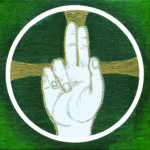 The hand represents God the Father.
The hand represents God the Father.
Throughout Scripture, the right hand symbolizes strength, victory and protection. It also saves. “Oh sing to the Lord a new song, for he has done marvelous things! His right hand and his holy arm have worked salvation for him” (Ps 98:1). It is Jesus who sits at the right hand of God the Father; it is Jesus who saves us. The three fingers pointing up represent the three persons of the Trinity, and the circle around it is called a nimbus. In Christmas artwork, Jesus, Mary, Joseph and the angels are often portrayed with a nimbus around their heads as a sign of sanctity, but Jesus’ nimbus contains three rays within it to represent deity.
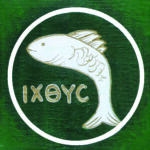 The fish represents Jesus, the Son of God.
The fish represents Jesus, the Son of God.
The Greek word for fish is ichthus. In the Greek language, it is spelled “IXΘYC.” These letters are an acronym, representing the first letter of five Greek words that in English mean “Jesus (I), Christ (X), God’s (Θ), Son (Y), Savior (C).” Early Christians who were subject to persecution used this code to identify themselves to each other.
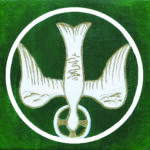 The dove represents the Holy Spirit.
The dove represents the Holy Spirit.
At Jesus’ Baptism, “the Holy Spirit descended on him in bodily form, like a dove; and a voice came from heaven, ‘You are my beloved Son; with you I am well pleased’” (Luke 3:22). The dove is pointing downward as a symbol of the Holy Spirit descending from heaven to live in us. Notice again the three-rayed nimbus.
Megan Schultz is a member of Redeemer Lutheran Church, Fort Wayne, and the owner of Red Letter Art & Design, a shop that offers Lutheran artwork, cards and liturgical calendars. Find her work online at redletterartdesign.etsy.com or facebook.com/redletterlutheran.
This article originally appeared in print in the December 2019 issue of The Lutheran Witness.


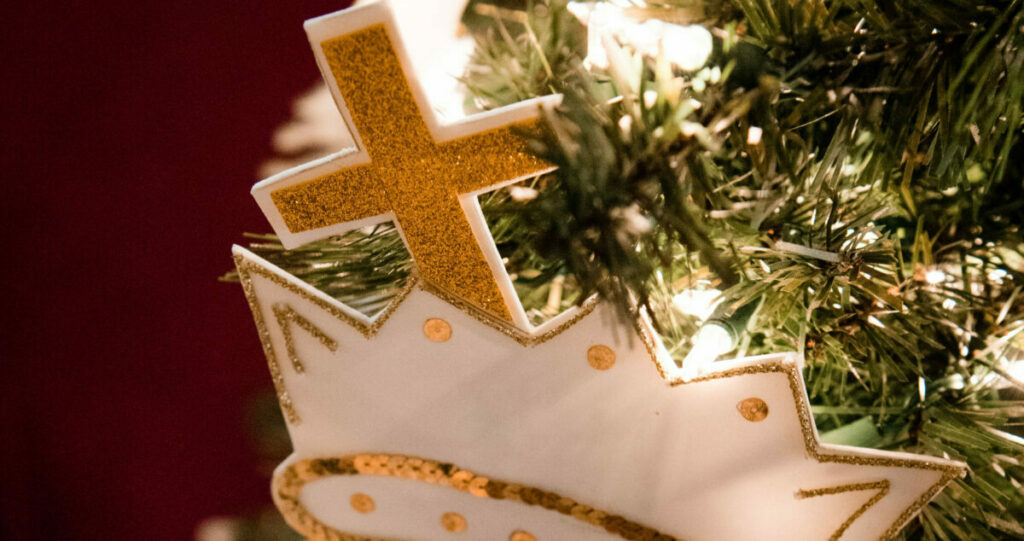

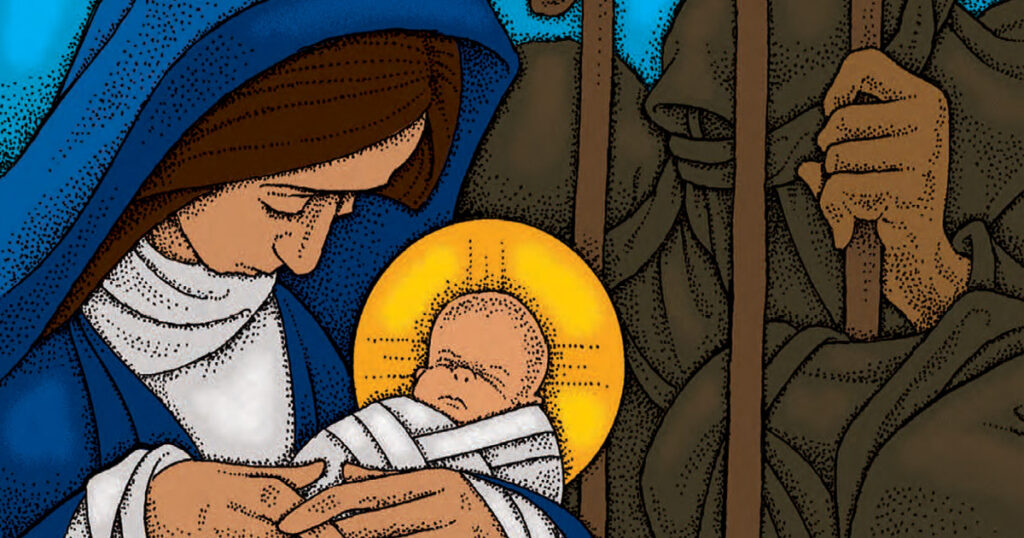
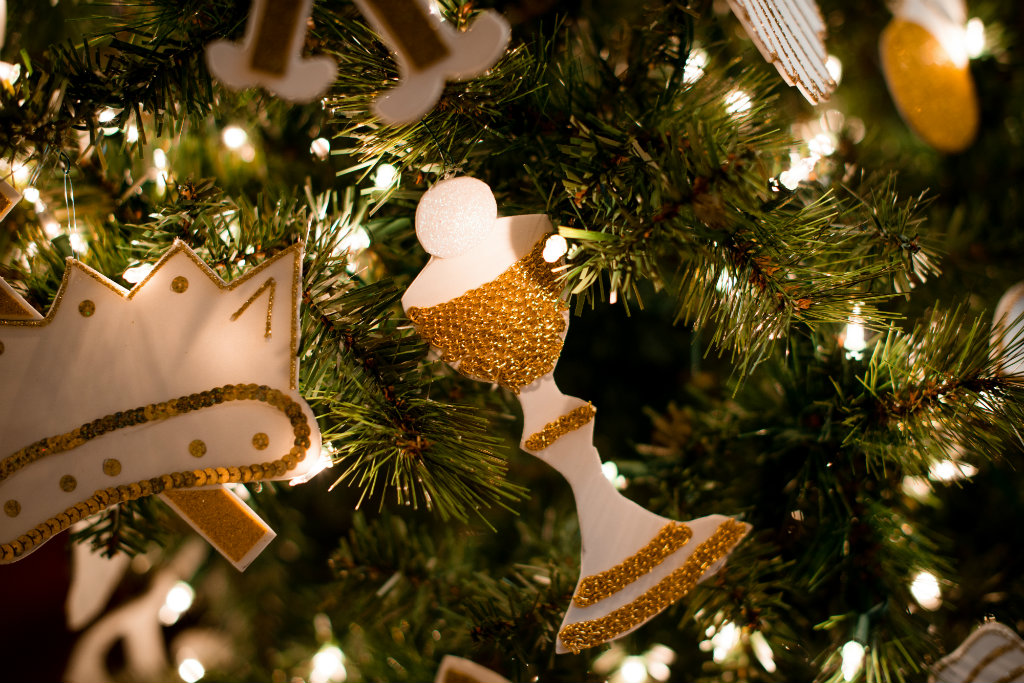
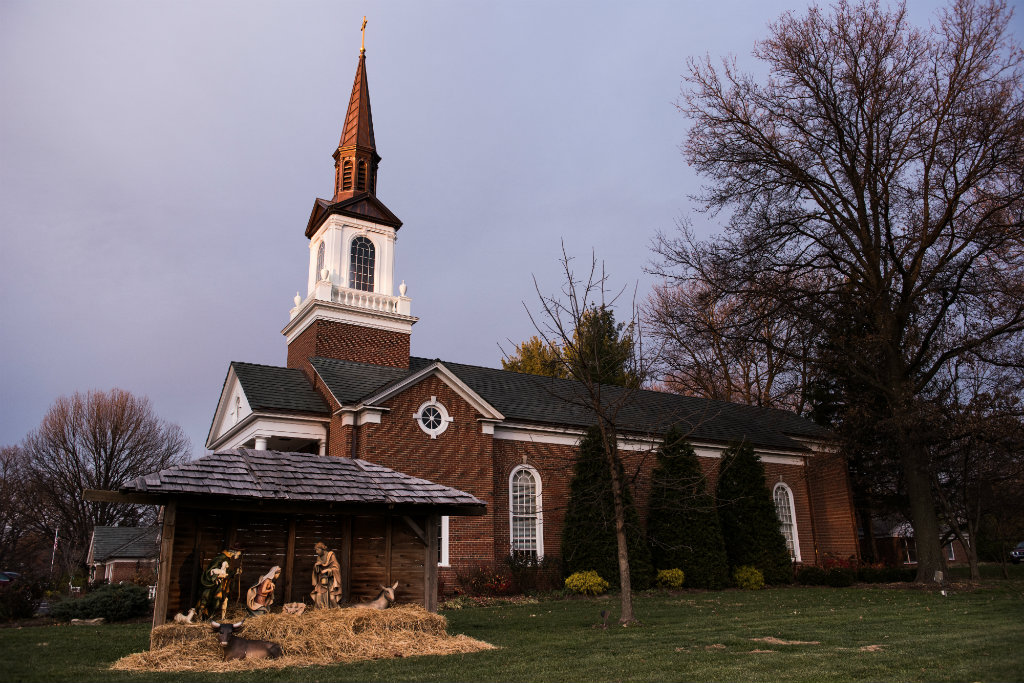
Tomorrow I will give the children’s sermon about each of the symbols and show them where they are on the tree and what they represent.
I had to check out the meaning of Chrismon. Thank you for help.
Christ Our Hope Lutheran Church in Riverdale, Ga.
I am trying to find out the “proper” protocal for putting up decorations in the church during Advent/Christmas season. Where should/can a tree “not go” inside the church, when should/can the white lights be lit. What about other decorations?
Susan,
I’m not sure there’s a hard-and-fast protocol for ordering these things. But you can find some helpful guidelines starting at the LCMS Worship’s website (https://www.lcms.org/worship/advent). They have also included links to additional resources at Concordia Publishing House as well.
Any advice on where patterns can be found for making Chrismons for future years?
Thank you for your comment. You can find all things Chrismons™ from Ascension Lutheran Church in Danville, VA, at chrismon.org or see the brochure from East Liberty Presbyterian Church here. You’ll find more information here.